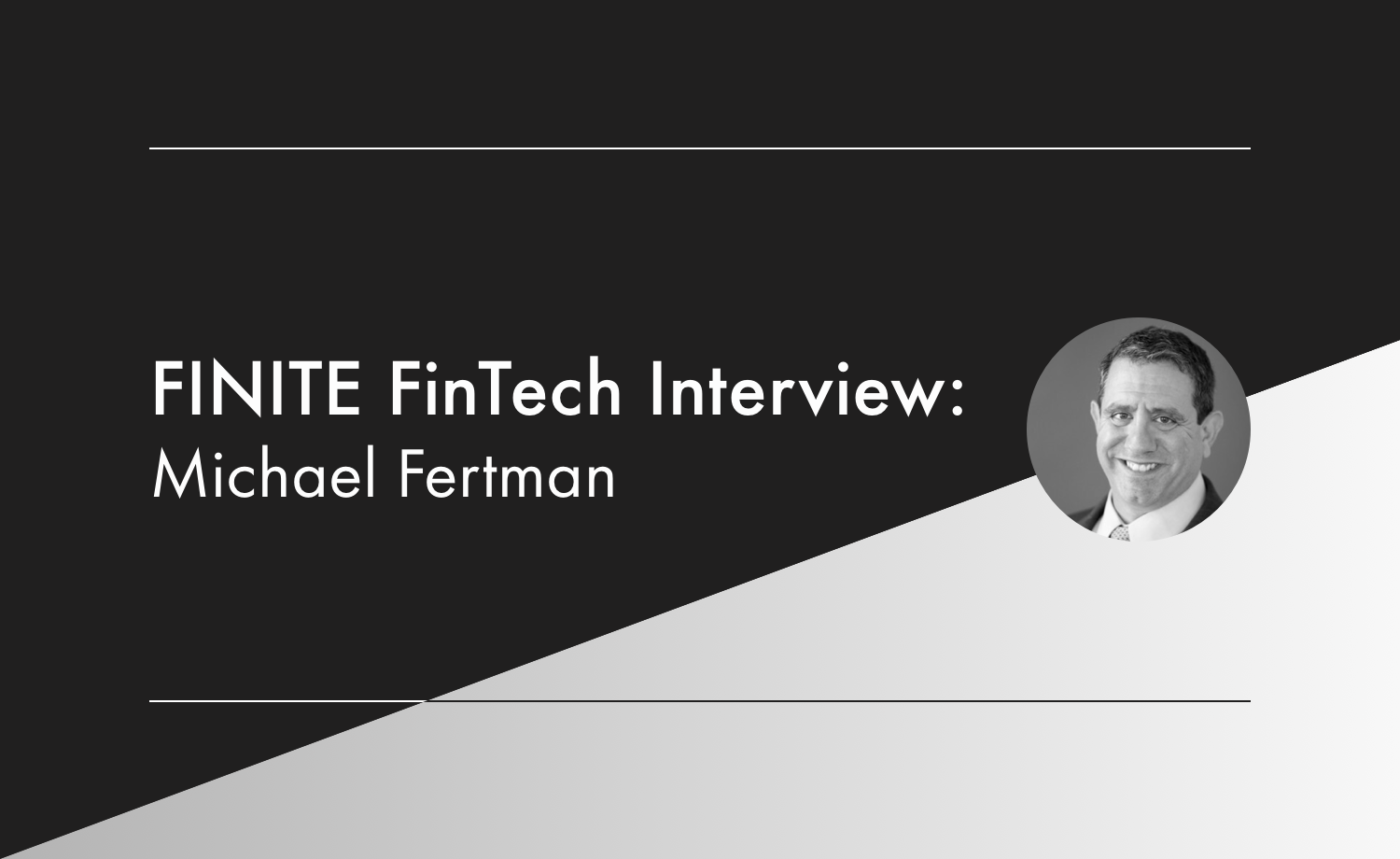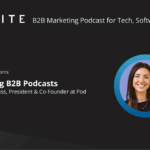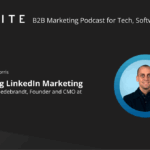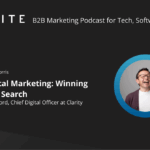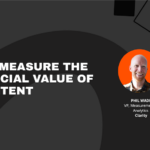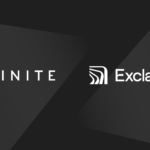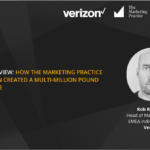Brand building is an essential part of marketing for any B2B startup, but how do you build brand without the guiding path of an existing category?
In this edition of the FINITE FinTech Interview Series, Michael Fertman, VP of Global Marketing at Apifiny, shares with us his secrets to building brand in a new category. Apfiny is a leading FinTech company that is building a new internet of finance
This interview covers:
- First steps to take in building a brand for a B2B FinTech startup
- Decide what your brand is and what do you stand for by identifying company values
- Do thorough competitor analysis for brand definition, which will inform your brand archetype, colour palette, messaging and brand voice
- Develop a strategy to build brand awareness, and practical examples of where to put your efforts
- How brand building differs between a startup with an existing category vs. creating a new category
- Having existing category allows you to look at existing organisations to see how they reach a particular audience, but there is more competition
- Building brand in a new category means you have a lack of competition, but no one is aware of the solution you are offering.
- PR is the key to creating noise in a new category as prospects won’t rely on your unknown company to educate them, they rely on established sources
- Hyper-targeting is important to make best use of your resources by concentrating on highly relevant prospects
- The biggest challenge in building brand for a B2B FinTech startup in a new category: Customers are not searching for a solution, because they are not aware their problem exists yet
- The solution: Start by focussing on end-company benefits. These are the ‘what’ you are solving, and less of the ‘how’ until the right moment in the buyer journey
- Get published in the publications that your prospects are reading
- Ride the coattails of competitors by building an association with them
- Signs of successful brand building for a B2B FinTech startup that is creating a new category
FINITE: Hi Michael! Firstly, could you tell us a bit about your background in FinTech marketing, and your current role as VP of Global Marketing at Apifiny?
Michael: My first job was about as far from FinTech as you could get — as a naval officer on a nuclear-powered cruiser in the Persian Gulf. The business verticals I’ve worked in since then include credit risk management across virtually all industries, real-time options analytics for institutional traders, fraud risk management for eCommerce, primary research services for institutional investors and white label crypto exchange technology for digital asset exchanges.
Now, Apifiny, where we’re building a new internet of financial services. I was a consultant for a few years, and worked with over a dozen companies during one five-year stretch.
Apifiny is cutting out the friction caused by highly fragmented markets to deliver a better, faster, and cheaper professional digital asset trading experience. We are launching a groundbreaking new trading platform that brings together the best qualities of two types of trading platforms — centralized (CEX) and decentralized (DEX) via a single interface. We also enable institutional traders to execute global strategies across multiple trading markets via one solution.
FINITE: What are the first steps you take in building a brand for a startup?
Michael: At a high level, like most marketers, I’m focused on two key brand-building areas — defining the brand and generating brand awareness. Brand building is much more important than meets the eye.
In both B2B and B2C, studies have shown that companies that spend roughly half their effort on brand building and a half on lead gen and activation efforts perform better than those that focus wholly on only brand building or wholly on lead generation.
For our brand-building efforts, we want to fly out of the gate with consistent and powerful messaging across channels. So, I start by assembling the brand’s foundation. Final outputs include a comprehensive messaging document — our 1 sentence tagline, 3 sentence description, boilerplate, messaging for key solutions and customer segments. We will also develop a brand guide and brand assets such as standard infographics, logos, social media templates, etc.
Where do we start?
My first question to answer is, “what is our brand definition? What do we stand for?” I view the brand as the sum of the company’s interactions with its customers and ecosystem. Understanding the brand experience, in a FinTech startup, comes from within. Marketing can build brand awareness and improve brand perception, but ultimately, your customers’ perceptions ARE your brand.
In the long run, there are a lot of big things to consider. Who is our product targeting? What brand archetype should we adopt given our competitive positioning and audience? What is the impact on our tone of voice, our color palette, and our marketing channels? And how do we portray our company values?
Part of the answer comes from the company’s values, which are almost always a top-down reflection of the CEO’s values. In the absence of time and money to do outside research, your CEO, head of sales, and head of customer success will give you a giant head start. And front-line sales and support team members will have the true unfiltered story.
From the CEO, learn his vision for the brand and its values. The head of sales can describe the different talk tracks that resonate with prospects and can give you a pulse on general market perceptions. Finally, your head of customer success will know what’s real. What works and doesn’t. Whether customers praise your company or the opposite. And why.
A second early step in my playbook is a quick and dirty outside-in competitive analysis. What are the taglines of our top competitors and substitutes? Who are they targeting and with what value propositions? What are the key dimensions of differentiation, and where can we “win” on that map? How do we compare in website rankings, keyword rankings, social media followers, and more.
All of this brand definition work will inform our brand archetype, color palette, key messaging, and our brand voice..
For the third early step, but sometimes first, I ask, “how can we get the word out far and wide?”
My playbook is all about the 80/20 rule – focus on the 20% of potential effort that can drive 80% of the potential results. I find there are almost always some quick hits to capture before developing a strategy. Examples include basic SEO upgrades by improving metadata and internal linking, keyword-driven display ads, directories, review sites, Quora. Also, social properties need to be active.
Most websites have low hanging SEO fruit. Keyword-driven display ads will generate giant numbers of impressions and clicks at a low cost, slowly building a new audience. LinkedIn ads will give you exceptionally targeted brand impressions to give potential customers logo recognition — “yeah, I think I’ve heard of you guys.”
Another quick hit is to find questions on Quora for which the answer could be your product. Answering a few questions will attract visitors from Quora who tend to be seriously interested in learning more. I also look for ready-made lead conversion funnels — are there any blog posts or pages capturing a lot of organic traffic? Can we turn them into lead gen pages with forms?
Sometimes a few days of quick-hits work upfront can pay dividends amidst the heavy lifting for the long haul.
Of course, we need a long-range plan, which encompasses more channels and more strategic planning and coordination — e.g. new product launches.
FINITE: How does building a brand differ for a startup with an existing category vs. a new category?
Michael: Night and day. And each with its advantages and disadvantages.
An existing category is defined and recognized as such broadly. Examples include email marketing software and social media marketing software. The good news is that you can easily learn how prospects search for solutions like yours. The bad news is that, almost by definition, you’re entering a space with entrenched incumbents.
A new category will likely be competing with the “old way of doing things.” The iPod replaced the MP3, which replaced the Discman, which replaced the Walkman, which replaced … nothing. Of course, the MP3 has been largely replaced now, too. When the MP3 was entering the market, there was no digital music category. But there was the Discman — an existing category in which to compete and take customers. Same problem. New solution. New category.
When blazing a new trail for a new category, nobody is searching for a solution like yours. Who would do a google search for a white label crypto exchange in 2010? 2015? 2020? It wasn’t a category in 2015, and now it is.
To win in these conditions, you have to make noise and be heard. And you have to be hyper-targeted in your outreach.
PR is critical. Why? Believe it or not, nobody cares about what you have to say.
They don’t know your category or your company. But they will listen to their current news sources and influencers about their key business problems and available solutions in the market. A strong in-house PR person is a very high ROI team member who will get your executives heard through answering questions for articles (“newsjacking”), publishing bylines that were written by (or ghostwritten for) your CEO in industry publications, and getting a handful of announcements written about you in your customers’ most trusted industry news sources.
When someone is deciding whether to take a sales call and Googles your company name, you benefit by having a handful of credible articles pop up with quotes from your team.
Why is hyper-targeting important? With limited resources you want your sales efforts to be with relevant prospects — companies that intensely feel the pain your solution solves. All messaging must be crystal clear about the problems you’re solving, for whom, why they should care, how much money is saved/produced.
For example, for our trading solutions, we know the profile of professional traders and can assemble our targets through a variety of creative methods — e.g., finding individuals who follow a certain combination of Twitter influencers. Or people with specific roles at specific companies. Hypertargeting, where possible, leads to shorter sales cycles and higher conversion rates — i.e., greater efficiency for sales.
FINITE: What’s the biggest challenge you have come across so far in building a brand for a startup that’s creating a new category? How did you overcome it?
Michael: The biggest challenge is that customers are not searching for a solution like ours when launching a new category. There are two keys to overcoming this challenge.
First, identify your company as part of the category you’re seeking to replace. If possible, create a catchy description. At Apifiny, we launched a new solution area, called Roxe, that will dramatically reduce the time and cost of sending cross-border payments. From days to seconds and for far less money.
We’re solving an old problem in a new way, with blockchain technology. In our go-to-market, we will focus on end-customer benefits — the “what” — and less on the “how” until the right time in the sales cycle.
Second, get published in the publications your prospects are reading. We’ve gone out of our way to be published in traditional finance publications, not just crypto publications, and we’ve also gone out of our way to associate ourselves with recognized brands.
Third, as much as possible, ride the coattails of your competitors’ brands. For example, we sponsored a panel discussion that included two other more established and recognized companies. We promoted it like mad, to not only attract registrants, but to also ensure thousands of brand impressions next to incumbents with brand recognition. Just being on the same stage sends a strong message. Now, we’ve been seen on a level playing field with our competitors. And people who follow them could not have missed our promotion.
When your company shows up in a search result for a competitor’s name, you’ll know you’ve arrived.
FINITE: What are some signs of successful brand building for a startup that’s creating a new category?
Michael: It’s hard to measure brand strength in a startup. We can perform occasional surveys to test recognition, and we can also see some indicators in our sales and marketing metrics:
- Direct and Organic traffic is increasing — more people are searching for your company by name
- You see an increasing share of site visitors from returning visitors — nurturing is working
- Sales cycles are shorter
- Email open rates are increasing, indicating greater brand awareness and interest
- You are receiving inbound inquiries to speak, provide quotes, or to learn more about your solutions
You’ve arrived at the promised land when there are review sites for your category, and you have the most reviews and the highest scores!
FINITE: Thank you so much for sharing with us your knowledge on building brand as a FinTech startup in a new category! You’ve given us thoughtful, specific and digestible answers that offer practical advice and valuable insight from your vast experience in B2B FinTechs.
To read the last edition of the FINITE FinTech Interview Series and to learn more about the role of a CMO, click here!
